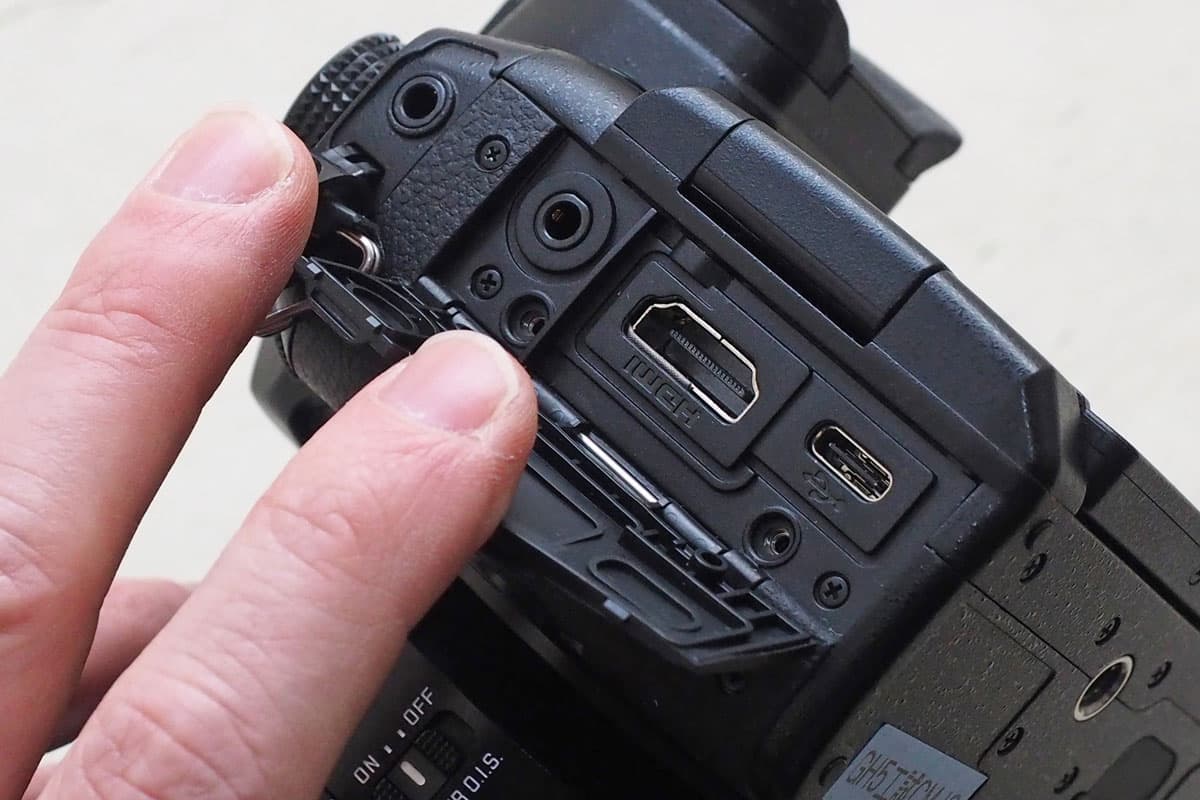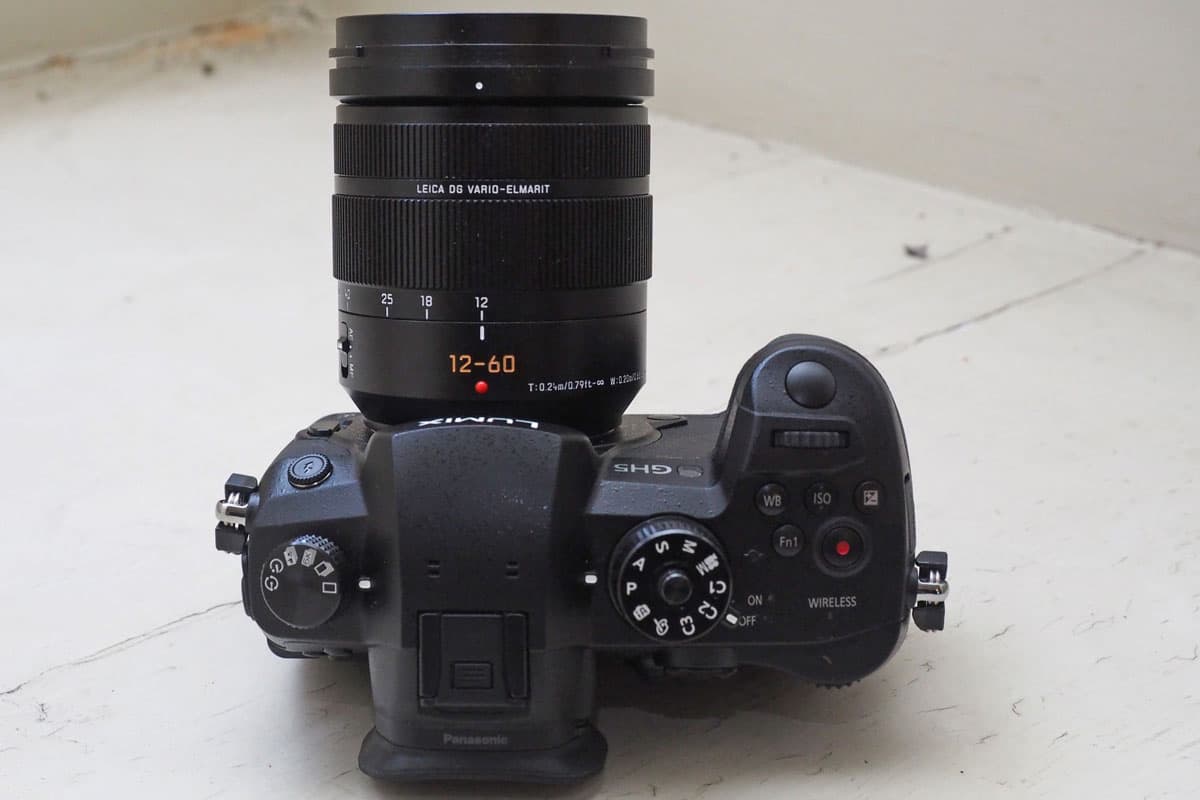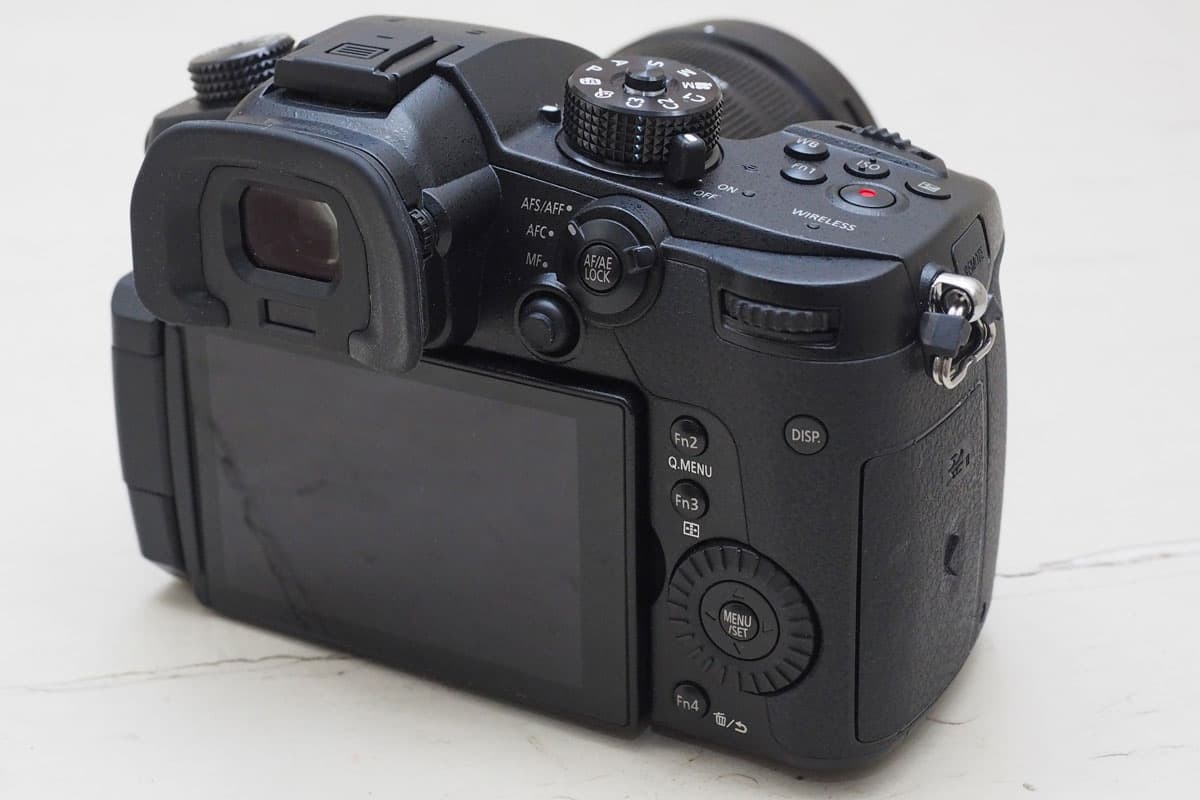Panasonic GH5: At a glance
- £1,699 body only
- £1,899 with 12-60mm f/3.5-5.6 lens
- £2,199 with 12-60mm f/2.8-4 lens
- 20.3MP Four Thirds sensor
- 5-axis Dual IS 2
- 12fps shooting
- 4K 60p video
Panasonic’s top-end GH-series mirrorless cameras have always been aimed at videographers, but more recently the firm has also focused on making them attractive to enthusiast photographers. Its latest iteration, the GH5, seems intent on offering the most comprehensive feature set possible for both of these target audiences. Panasonic revealed it was developing the camera at Photokina last year, but has now taken the wraps off the final product.
Possibly the single most eye-catching addition compared to its predecessor, the GH4, is in-body image stabilisation that works in parallel with Panasonic’s optically stabilised lenses – a system the firm calls Dual IS 2. This promises up to five stops of correction, and it certainly impressed us with its effectiveness on last year’s G80. Together with a significantly expanded 4K video specification, it’s likely to make the GH5 the camera of choice for videographers who need to work handheld. But it’s also hugely useful for photographers, as it works with almost every lens you can fit onto the camera.
But that’s far from the only significant upgrade – indeed, almost every aspect of the camera has been revised. Panasonic says the GH5’s 20.3-million-pixel Four Thirds sensor is different from that used in last year’s GX8, and should give the highest image quality yet from a Lumix camera. Coupled with the new Venus Engine processor, it delivers a sensitivity range of ISO 200-51,200. In-camera processing has been improved to give more attractive colour rendition while reducing noise reduction and sharpening artefacts.
Autofocus uses 225 zones covering almost the entire frame, and Panasonic claims its latest Advanced Depth from Defocus (DFD) technology is capable of acquiring focus in less than 0.05sec. It also promises improved subject tracking, with four user-selectable AF set-ups to deal with different shooting scenarios.
Continuous shooting is available at 12 frames per second when focus is fixed, or 9fps with AF between frames (both with an impressive 100-frame raw buffer). The same shutter unit as the GH4 is used again, giving speeds up to 1/8,000sec while being rated for 200,000 cycles. But it’s now suspended within the camera body to reduce vibrations from ‘shutter shock’ and as a result is also much quieter than before.
Both the viewfinder and screen have also been significantly updated. The EVF employs a stunningly detailed 3.68M-dot OLED panel (likely the same as that used in the Leica Q) and offers 0.76x magnification. Meanwhile the fully articulated 1.62M-dot 3.2in screen is touch sensitive and uses WhiteMagic technology for increased brightness.
Another key update is the addition of a second SD card slot, with plenty of choice for hw you choose to use the two cards. Files can be backed up to both cards, or different file types (raw, JPEG or video) recorded to each.
Naturally Wi-Fi is built in, and Panasonic has added Bluetooth LE to establish a permanent connection to a smartphone. We’ve seen this in several cameras recently, such as the Nikon D500 and Canon EOS M5, and done well it can helpfully simplify the process of establishing a Wi-Fi connection between the camera and phone. However we weren’t able to try out exactly how Panasonic’s implementation works.
4K Video and 6K Photo

The GH5 gains USB-C and full-size HDMI Type-A ports, alongside 3.5mm headphone and microphone sockets
Panasonic has added loads of extra features on top of the GH4’s already class-leading video specification – indeed, too many to list here. 4K video now can be recorded at 60fps for an unlimited length of time, with 4:2:2 10-bit colour for rich tonal gradations. Footage can be recorded internally and output over HDMI simultaneously, and it’s even possible to hot-swap SD cards while the camera is recording, when one fills up. An optional XLR microphone adapter will be available for recording high-grade stereo audio. Panasonic plans to add even more features with a series of firmware updates in 2017.
The enhanced video capability extends to Panasonic’s signature 4K Photo mode, which now allows recording of 8MP stills at 60fps – double the frame rate as before. But the GH5 also includes a new 6K Photo mode for shooting 18MP stills at 30fps, which is plenty of resolution for a detailed A3 print. New to the GH5 is automatic correction of rolling shutter distortion effects.
Build and handling
Physically, the GH5 is similar to the GH4, with just a few small but important changes to the control layout. The video record button has migrated to the top plate, to make way for a large joystick that’s used to move the AF point – a very welcome addition. The other main changes are the addition of a second SD card slot, and the removal of the built-in flash. Aside from that, things are very much as they were, with lots of buttons and dials giving direct access to every important function.
Build quality is excellent, and Panasonic has added freeze proofing (to -10°C) alongside dust and splash resistance. The large grip fits comfortably in your hand and all the key controls are readily accessible. At first sight, the GH5 should easily match high-end DSLRs such as the Nikon D500 for usability.
First impressions
We’ve seen some incredibly capable high-end mirrorless cameras recently, including the Fujifilm X-T2 and Olympus OM-D E-M1 Mark II, but the GH5 looks as if it should hold its own in such strong company. With its mind-boggling array of video features, it will doubtless be most appealing to users who are serious about movie making. But this really shouldn’t put off stills photographers, as the GH5 includes plenty for them, too. Its tough, weather-sealed construction, relatively compact size and in-body IS make it an intriguing proposition for outdoor and action shooting and we’re really looking forward to getting our hands on one for a full review.











